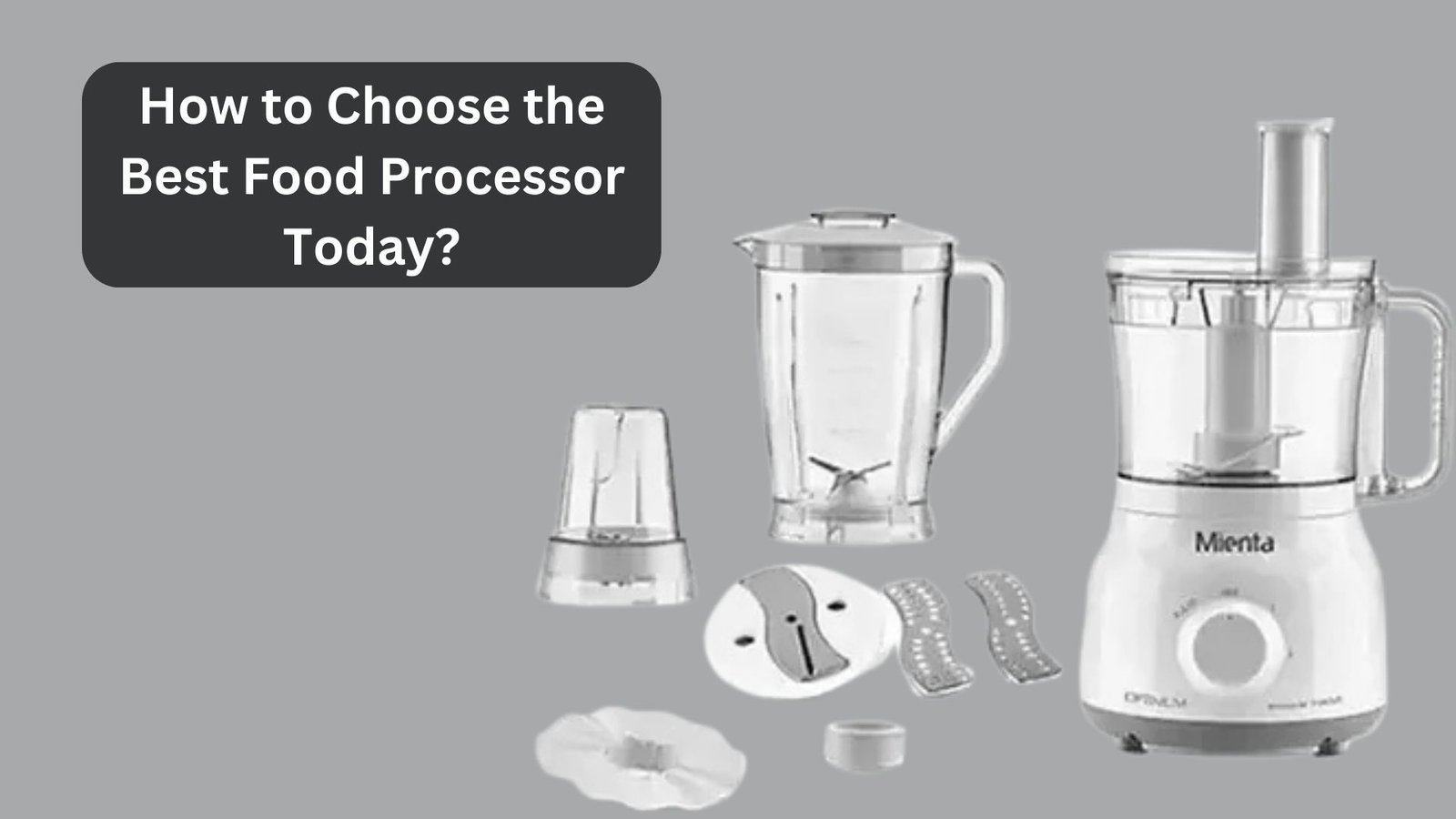A food processor is an invaluable kitchen tool that simplifies meal preparation and enhances your cooking experience. Whether you’re an amateur cook or a seasoned chef, the right food processor can save time, effort, and even money. But with so many options on the market, how do you choose the best food processor for your needs? This guide will walk you through everything you need to know.
Understand the Purpose of a Food Processor
Before diving into features and specifications, it’s important to understand what a food processor is and how it differs from other kitchen appliances. Unlike blenders or mixers, food processors are designed to handle a wide variety of tasks, such as chopping, slicing, shredding, kneading, and pureeing. They’re versatile enough to prepare ingredients for soups, sauces, doughs, and more.
Common Uses of a Food Processor
- Chopping vegetables quickly and evenly
- Making dough for bread or pizza
- Shredding cheese or grating carrots
- Pureeing soups or making nut butter
- Slicing fruits and vegetables for salads
Benefits of Owning the Best Food Processor
Owning the best food processor can significantly reduce the time spent on repetitive tasks. It ensures consistency in food preparation, which is particularly important for recipes requiring precise cuts or textures. Additionally, it minimizes manual labor, making cooking more enjoyable and efficient.
NOTE : The best food processor was chosen to simplify meal preparation. Customers relied on its versatility for chopping, blending, and kneading. Visit Bijli ki Dukan now to find the perfect model for your kitchen!
Key Features to Look For in a Food Processor
When selecting the best food processor, consider the features that matter most to you. Here are some essential factors to evaluate:
Capacity
Food processors come in various sizes, ranging from mini to full-size models. Your choice should depend on the size of your household and the quantity of food you usually prepare.
- Mini (1-4 cups): Ideal for small tasks like chopping herbs or nuts.
- Medium (5-8 cups): Suitable for small families or occasional cooking.
- Large (9-14 cups): Perfect for larger households or frequent use.
- Extra-Large (15+ cups): Designed for heavy-duty use or professional kitchens.
Motor Power
The motor’s strength determines how efficiently the food processor handles tough tasks like kneading dough or chopping hard vegetables. Look for models with at least 600 watts for versatile performance. Higher wattage models are recommended if you plan to use your food processor extensively.
Blades and Attachments
A high-quality food processor should come with multiple blades and discs to handle a variety of tasks. Common attachments include:
- Slicing Discs: For creating uniform slices of fruits and vegetables.
- Shredding Discs: For grating cheese or shredding vegetables.
- Chopping Blade: For general chopping and mixing tasks.
- Dough Blade: For kneading dough effortlessly.
- Whisk Attachment: For whipping cream or egg whites.
Ensure that the blades are made of durable stainless steel to withstand frequent use.
Speed Settings
Most food processors offer two or three speed settings, along with a pulse function. Adjustable speeds allow you to control the texture of your ingredients, whether you’re aiming for a coarse chop or a fine puree.
Ease of Cleaning
Cleaning can be a hassle, especially if your food processor has many intricate parts. Look for models with dishwasher-safe components and fewer crevices where food particles can get trapped.
Safety Features
Safety should always be a priority when using kitchen appliances. Features like a locking lid, non-slip base, and overload protection can prevent accidents and prolong the life of your food processor.
Types of Food Processors
Not all food processors are created equal. Understanding the different types available can help you identify the best food processor for your needs.
Mini Food Processors
Mini food processors are compact, lightweight, and ideal for small tasks like chopping herbs or making dips. They’re perfect for individuals or couples with limited counter space.
Full-Size Food Processors
Full-size models offer more power and versatility, making them suitable for families or those who cook frequently. They can handle larger quantities and come with more attachments.
Multi-Function Food Processors
These models combine the functionalities of a food processor, blender, and sometimes even a juicer. They’re an excellent choice if you want an all-in-one appliance but may require more storage space.
Commercial Food Processors
Designed for professional kitchens, commercial food processors are heavy-duty machines built for continuous use. They’re expensive but necessary for large-scale food preparation.
Matching the Food Processor to Your Needs
Choosing the best food processor isn’t just about buying the most expensive or feature-rich model. It’s about finding one that aligns with your cooking habits, kitchen space, and budget.
Assess Your Cooking Style
- Frequent Cooks: Opt for a high-capacity, full-size model with multiple attachments.
- Casual Cooks: A medium-sized or mini food processor may suffice for occasional use.
- Bakers: Look for models with a dough blade and strong motor.
Consider Your Kitchen Space
If you have limited counter space, prioritize compact models or multi-function appliances that can replace other kitchen tools.
Budget Considerations
Food processors range from $50 to over $500. While budget-friendly options are tempting, investing in a durable, high-quality model can save money in the long run.
Top Brands to Consider
Several brands consistently produce reliable food processors. Here are a few to consider:
- Cuisinart: Known for its durability and versatile attachments.
- KitchenAid: Offers stylish designs and powerful motors.
- Breville: Combines innovation with user-friendly features.
- Hamilton Beach: Budget-friendly options with decent performance.
- Ninja: Multi-functional models ideal for modern kitchens.
Maintenance Tips for Longevity
To keep your food processor in top condition, follow these maintenance tips:
- Clean all components immediately after use to prevent residue build-up.
- Sharpen or replace blades as needed to maintain efficiency.
- Store attachments in a safe place to avoid damage or loss.
- Avoid overloading the processor to prevent motor strain.
Conclusion
Selecting the involves balancing features, performance, and price to meet your specific needs. By understanding the different types, essential features, and top brands, you can make an informed decision that enhances your cooking experience. Remember, a high-quality food processor is an investment in your kitchen’s efficiency and your culinary creativity. Choose wisely, and enjoy the convenience and versatility it brings to your daily cooking routine.
For More Insightful Articles Related To This Topic, Feel Free To Visit : empireadda


